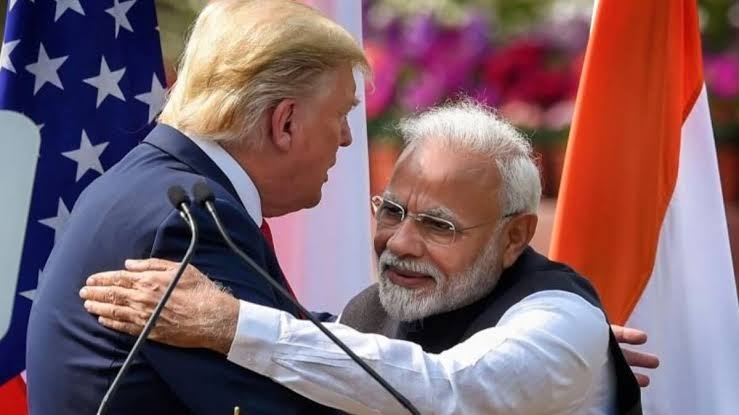Prime Minister Narendra Modi and US President Donald Trump pledged to move forward towards facilitating the creation of American design nuclear reactors in India under the historic civil nuclear deal between the two countries 16 years ago.
On Thursday (Friday) at the official residence and office of the US President’s official residence and office ‘White House’, Trapan and Modi decided to remarkly in his conversation.
The civil nuclear deal changed India’s overall association with the US and paved the way towards forming a strategic partnership in high technology and defense sectors.
According to a joint statement of the two leaders, “Trump and Modi moved ahead with plans to work together for the construction of nuclear reactors designed by the US in India through massive localization and possible technology transfer. India announced its commitment to fully realize the 123 civil nuclear deal. ”
Finance Minister Nirmala Sitharaman, while presenting the Union Budget on February 1, announced a plan to amend India’s Atomic Liability Act as well as the Nuclear Energy Act.
Some sections of India’s nuclear damage Act, 2010 have emerged as an obstacle in moving towards the implementation of the civil nuclear deal.
The statement said that the two sides welcomed the recent announcement of the Government of India to amend the Nuclear Energy Act and the Civil List for Nuclear Damage Act (CLNDA) during the budget session in Parliament.
The statement said that the two sides have decided to establish bilateral arrangements according to the CLNDA, which will address the issue of civil obligation and facilitate the cooperation of Indian and American industry in the production and installation of nuclear reactors.
The Atomic Energy Act of the year 1962 restrictions the investment by the private sector in nuclear power plants. The proposed amendment is expected to remove this provision.
In January, the US lifted ban on Bhabha Atomic Research Center (BARC), Indira Gandhi Atomic Research Center (IGCAR) and Indian Rair Earths (IRE). The move was seen by the US as the intention of moving forward on civil nuclear cooperation with India.
India and the United States launched the ambitious plan to cooperate in civil nuclear energy after the then Prime Minister Manmohan Singh’s meeting with the then Prime Minister Manmohan Singh in July 2005 with US President George W. Bush.
The historical civil nuclear deal was eventually closed after several talks after several talks.
The agreement was expected to pave the way for the US to allow India to share civil nuclear technology with India.
However, relatively cooperation could not proceed due to several reasons, including strict obligation laws in India.
American nuclear reactor manufacturers such as General Electric and Westinghouse showed a keen interest in setting up nuclear reactors in India.
Over the years, India has been interacting with several countries including the US and France to cooperate in small modular reactors (SMR).
